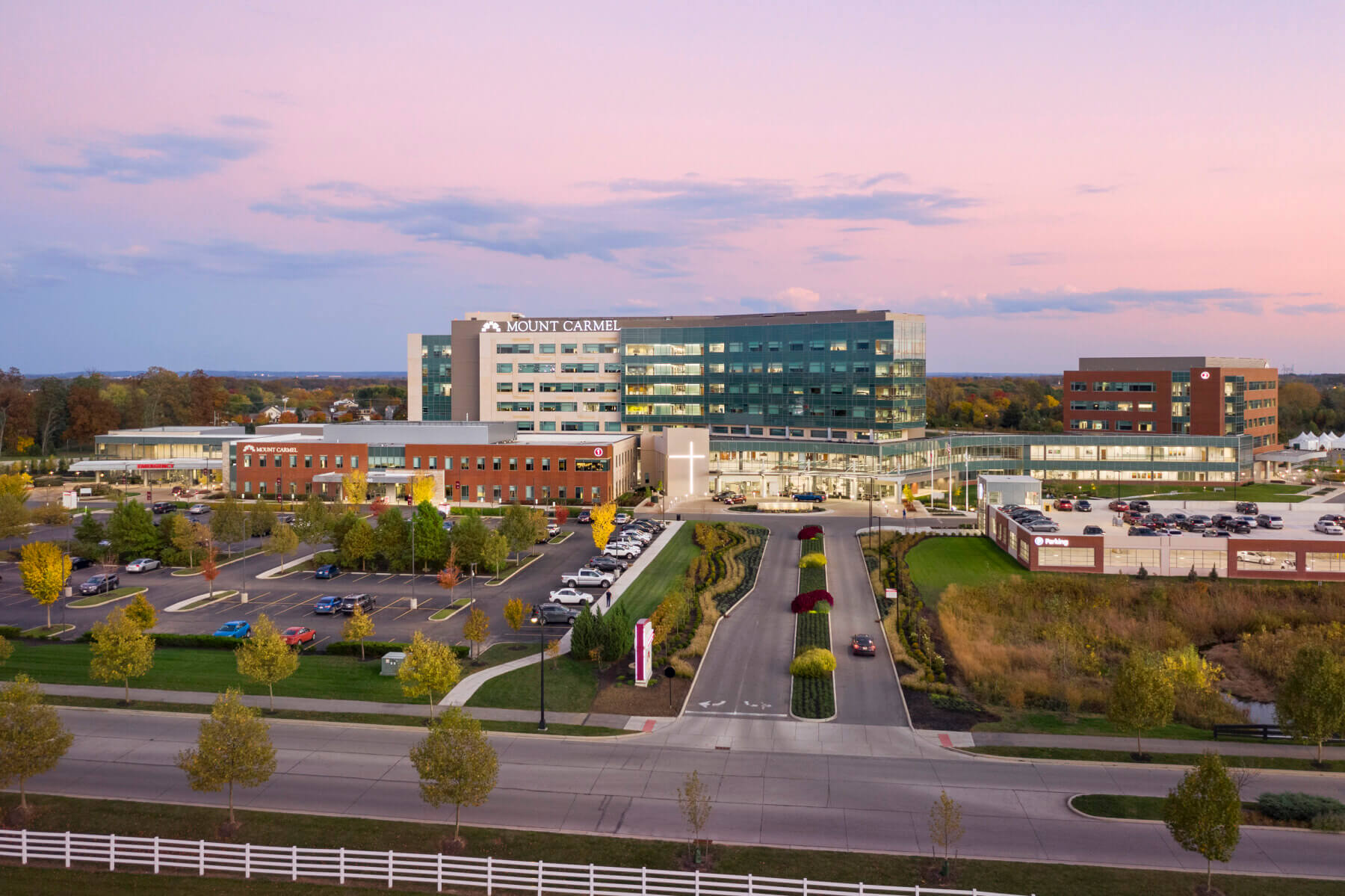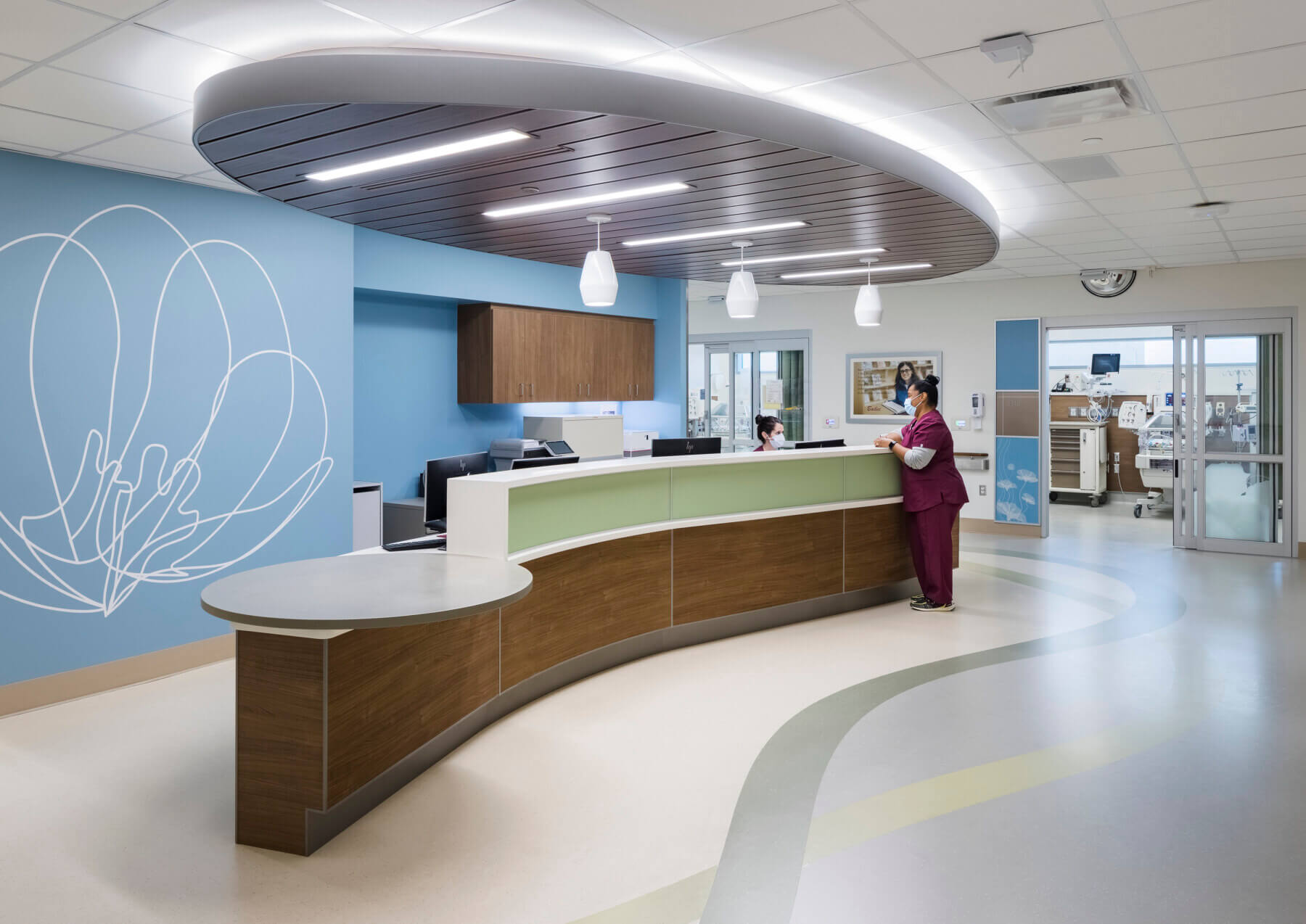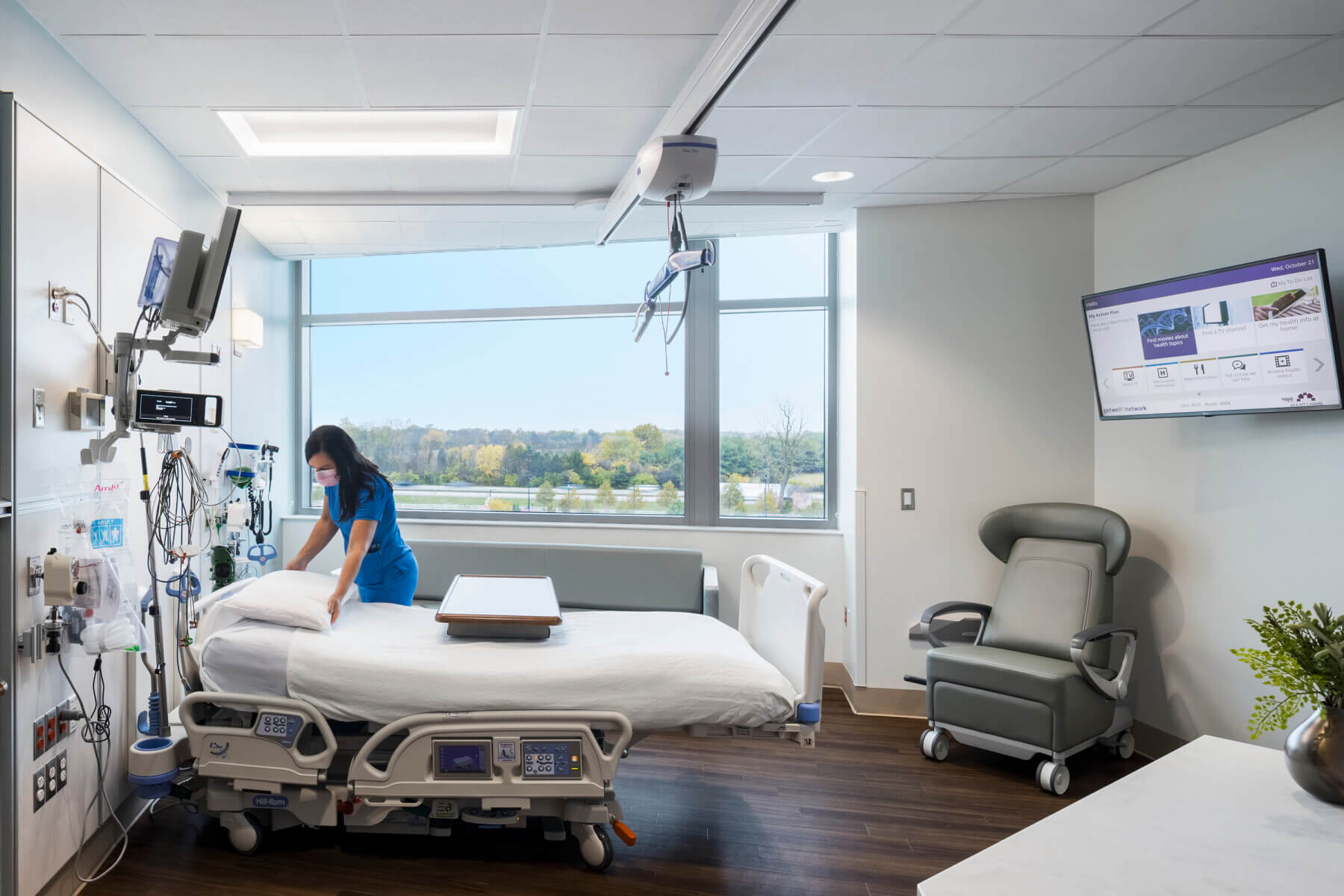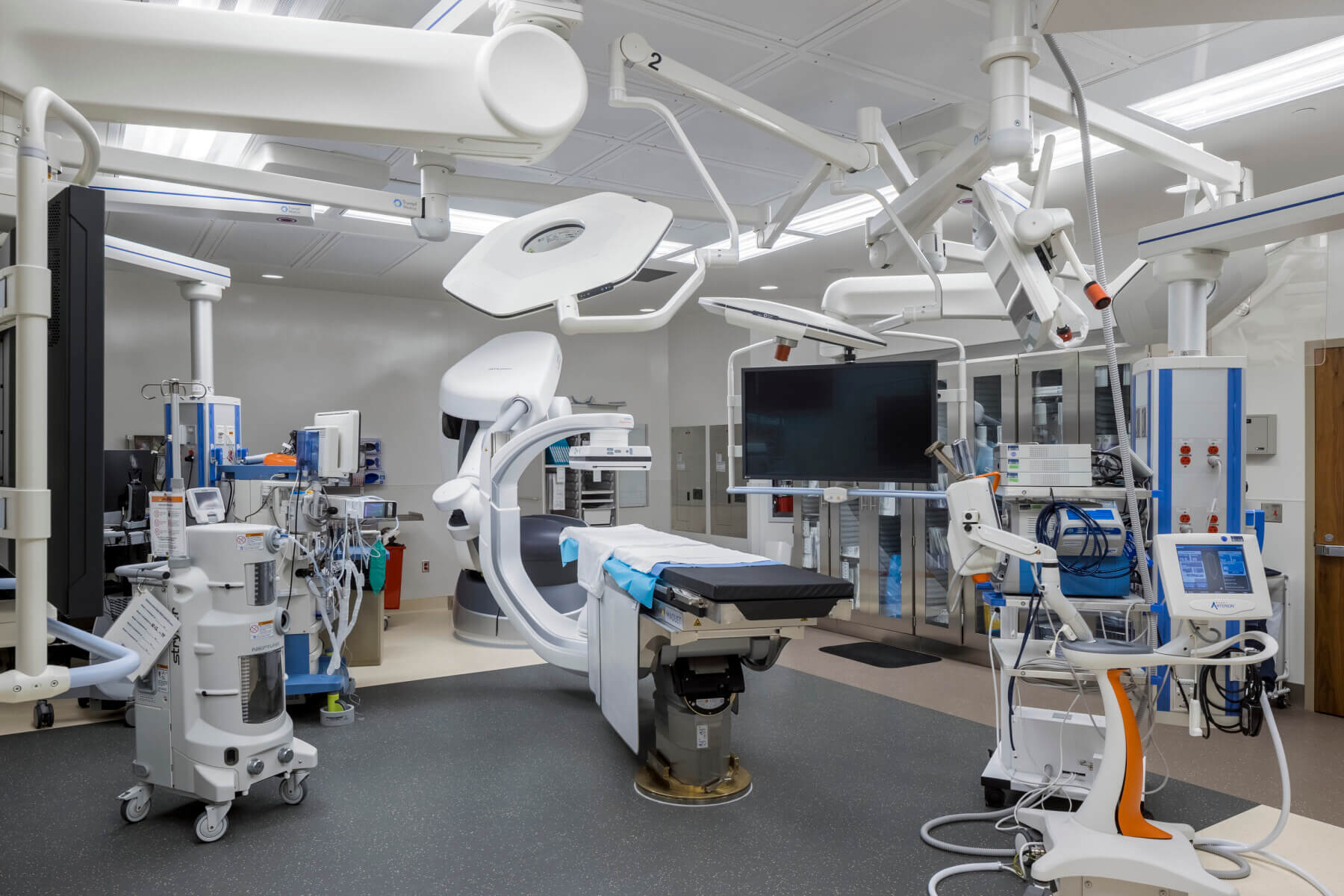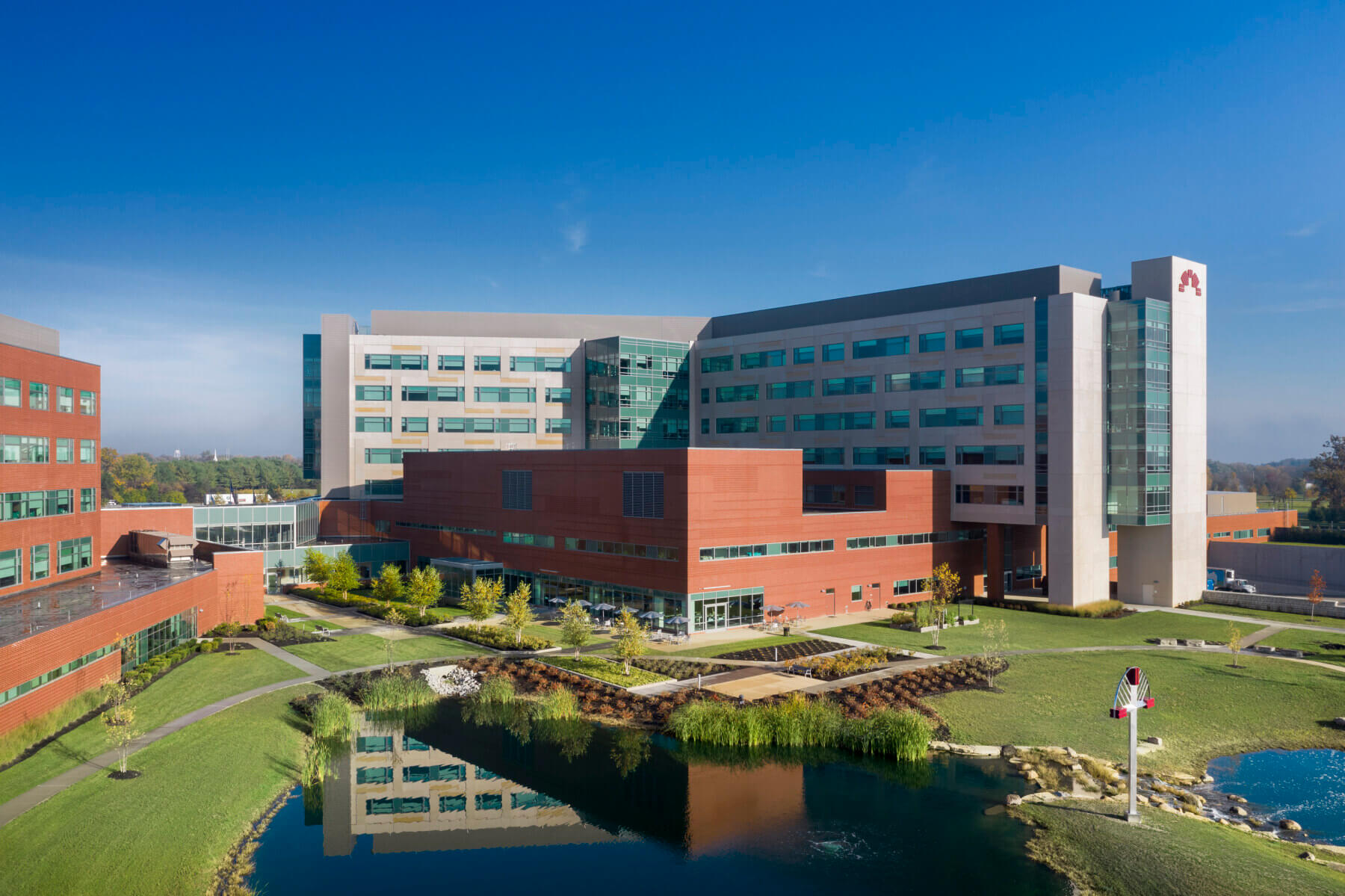
To improve operational efficiencies in the new facility, our team began by leading multidisciplinary service line teams from Mount Carmel through a Lean process improvement and operational alignment exercise. The Gresham Smith team also offered solutions to streamline care, which included consolidating four critical care units into one central location, forming an interventional platform for all surgical and endovascular procedures and creating an independent short-stay observation unit that can convert to a pandemic unit.
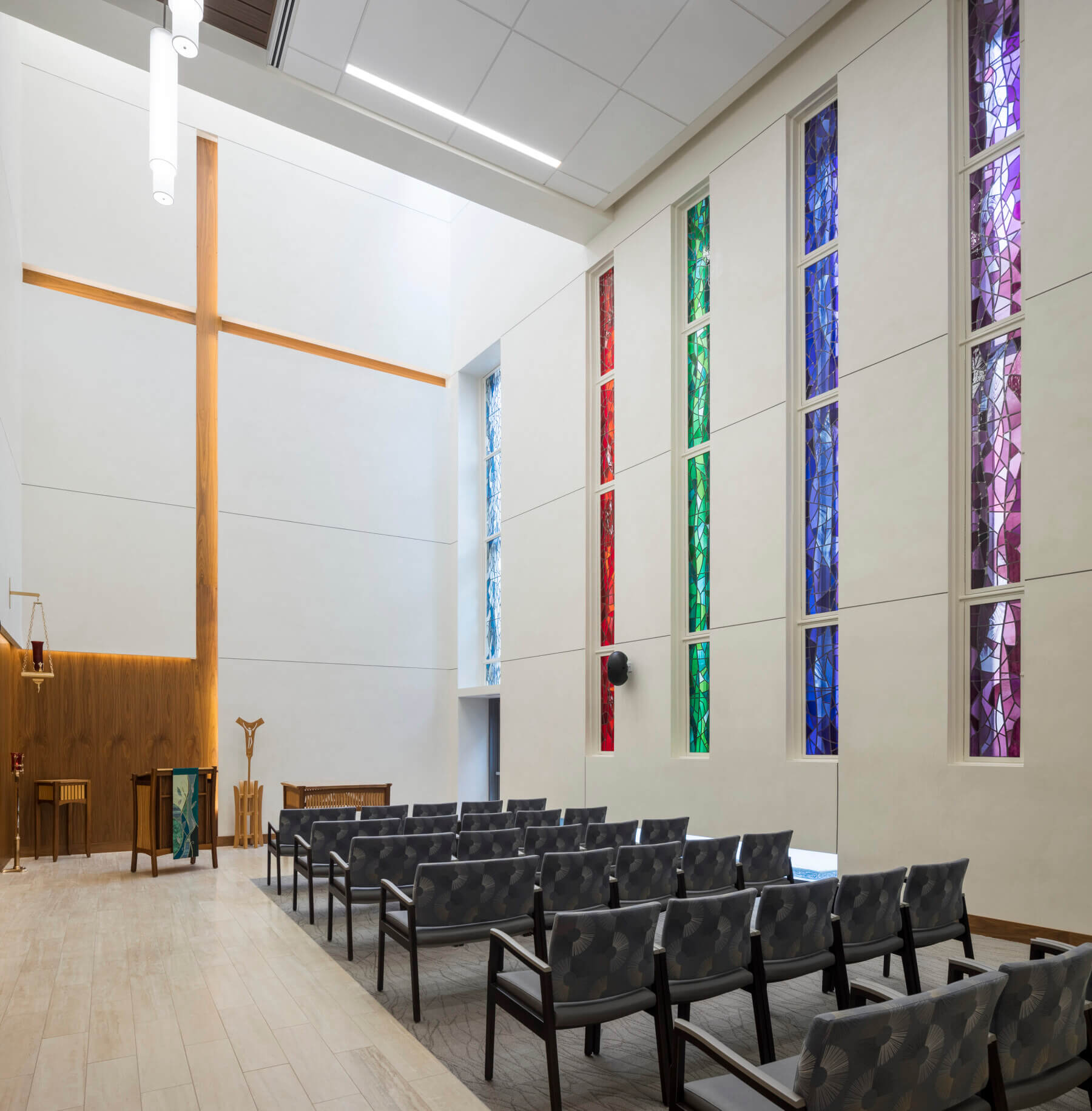
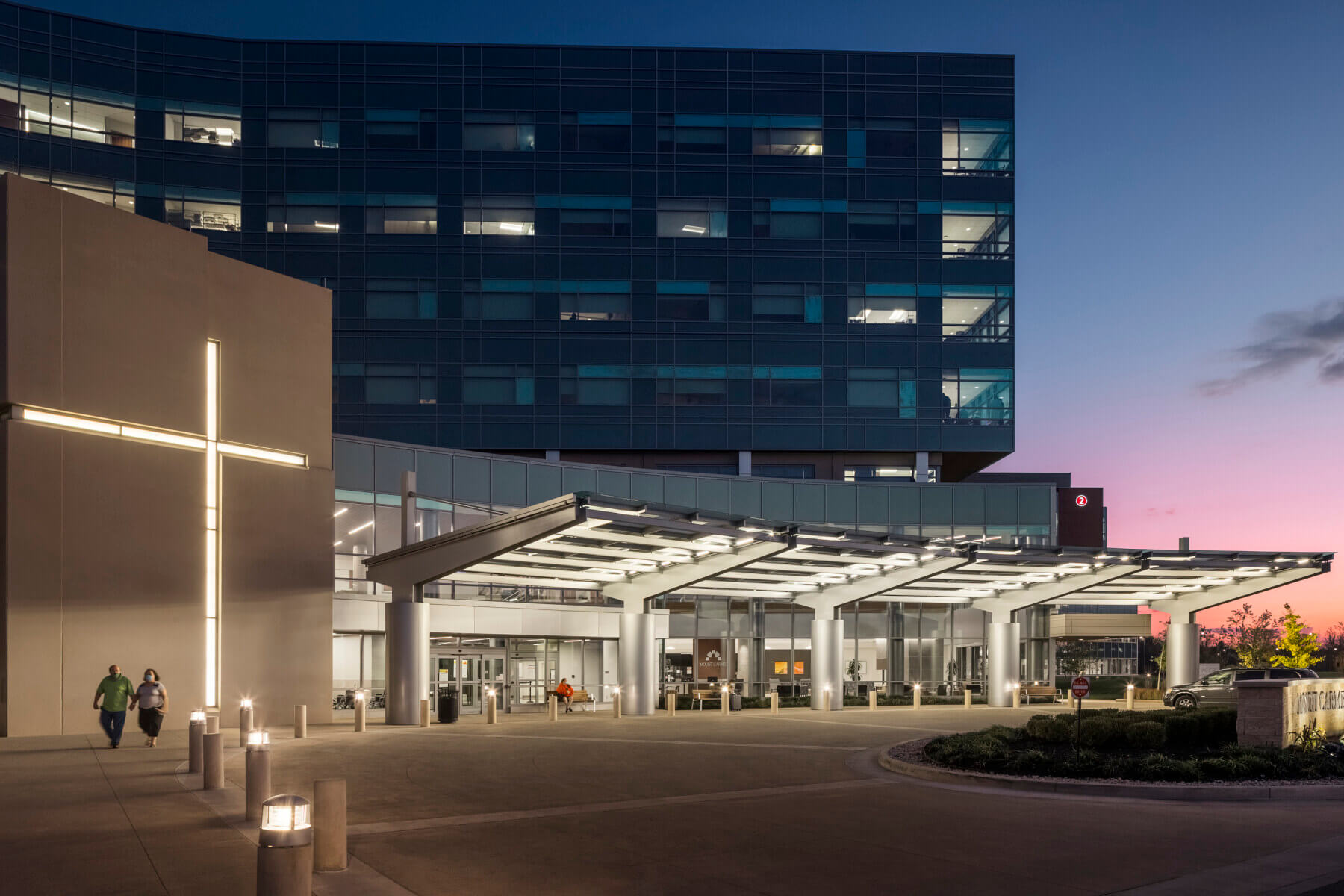
Mount Carmel’s strong Catholic heritage and mission of “providing compassionate, faith-based quality care to patients” was top-of-mind throughout the design process. From salvaging the old hospital’s terrazzo floor seal and placing it inside the staff entry to incorporating a stained glass cross motif throughout, the new hospital has connections to the past. Located immediately inside the main entrance, the chapel is a focal point that welcomes visitors to a facility that cares for mind, body and spirit. The space features an illuminated, ceiling-grazing cross that can be seen on the building’s exterior as well. We also salvaged the stained glass from Mount Carmel’s previous facility and incorporated it into the chapel’s clerestory, while venetian plaster creates texture and antique furniture in the sacristy adds to the historical feel.
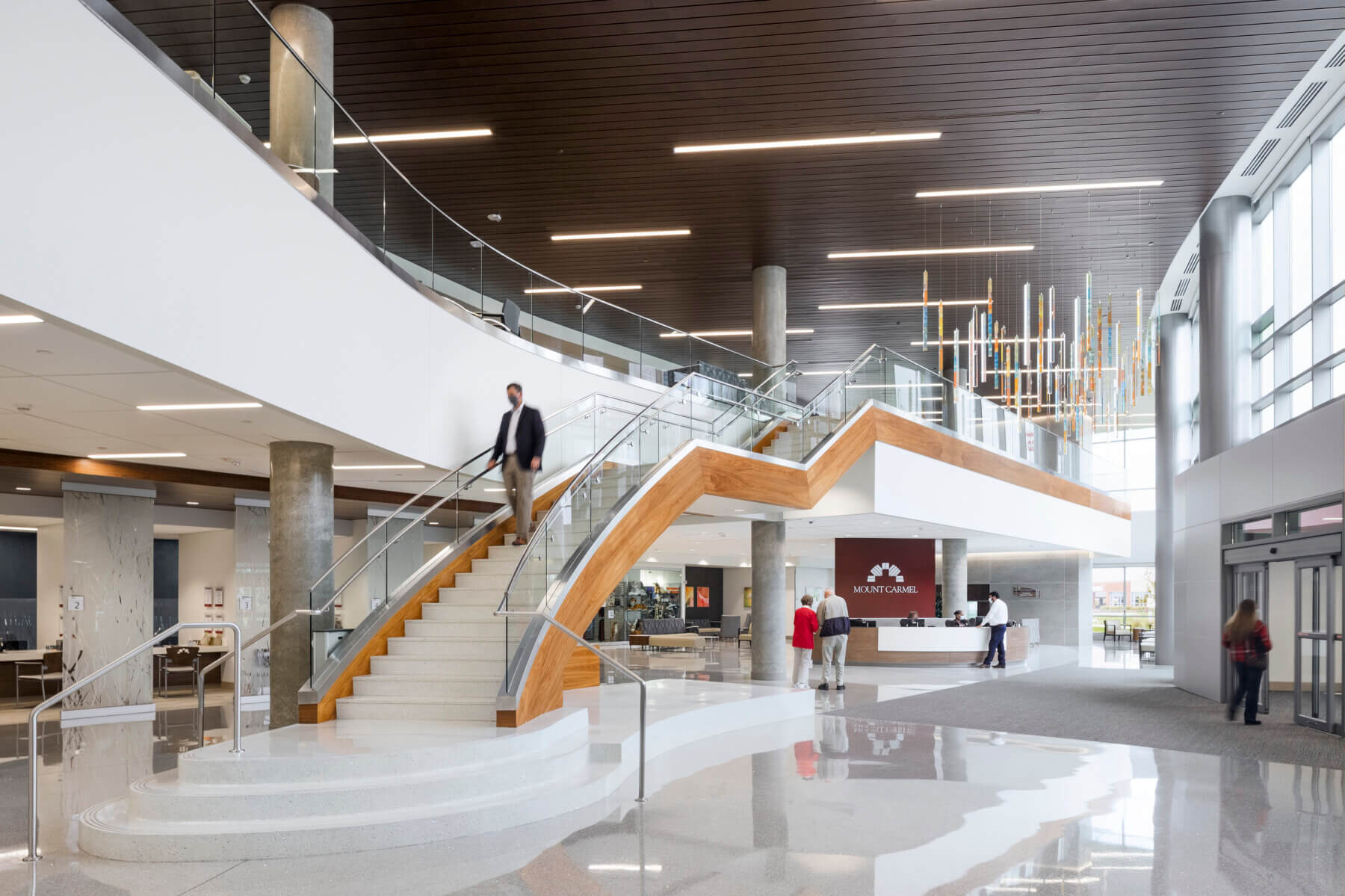
Patients and visitors experience clear, intuitive wayfinding the moment they step on site. A glass curtainwall façade and entry boulevard makes the main entrance hard to miss. Inside the main lobby, a monumental stair visually connects visitors to the other floors and a main concourse, dubbed “Main Street,” provides easy access to the hospital’s chapel, registration, waiting, dining, pharmacy and imaging areas, as well as the emergency department, medical office buildings and conference center.
The second floor, dubbed the “procedure platform,” consolidates the procedure spaces, which weren’t adjacent in the former hospital, into one location. The space is home to consolidated prep and recovery areas, nine operating rooms, an interventional radiology suite, two cardiac catheterization labs, a minor procedure room, a nuclear medicine suite and an endoscopy suite.
The surgical suite was designed for maximum operational efficiency. The nine operating rooms are arranged in a racetrack design with a central sterile core, while the two exterior walls feature clerestories that bring natural light into the space. Dedicated “clean” and “dirty” elevators, a pneumatic trash and linen system, and “wave” entry features aid in infection control. Dedicated mop closets outside each operating room enable efficient cleaning and turnover, mobile nurse stations keep care close to patients, and modular surgical ceiling systems create adaptability and flexibility as technologies evolve.
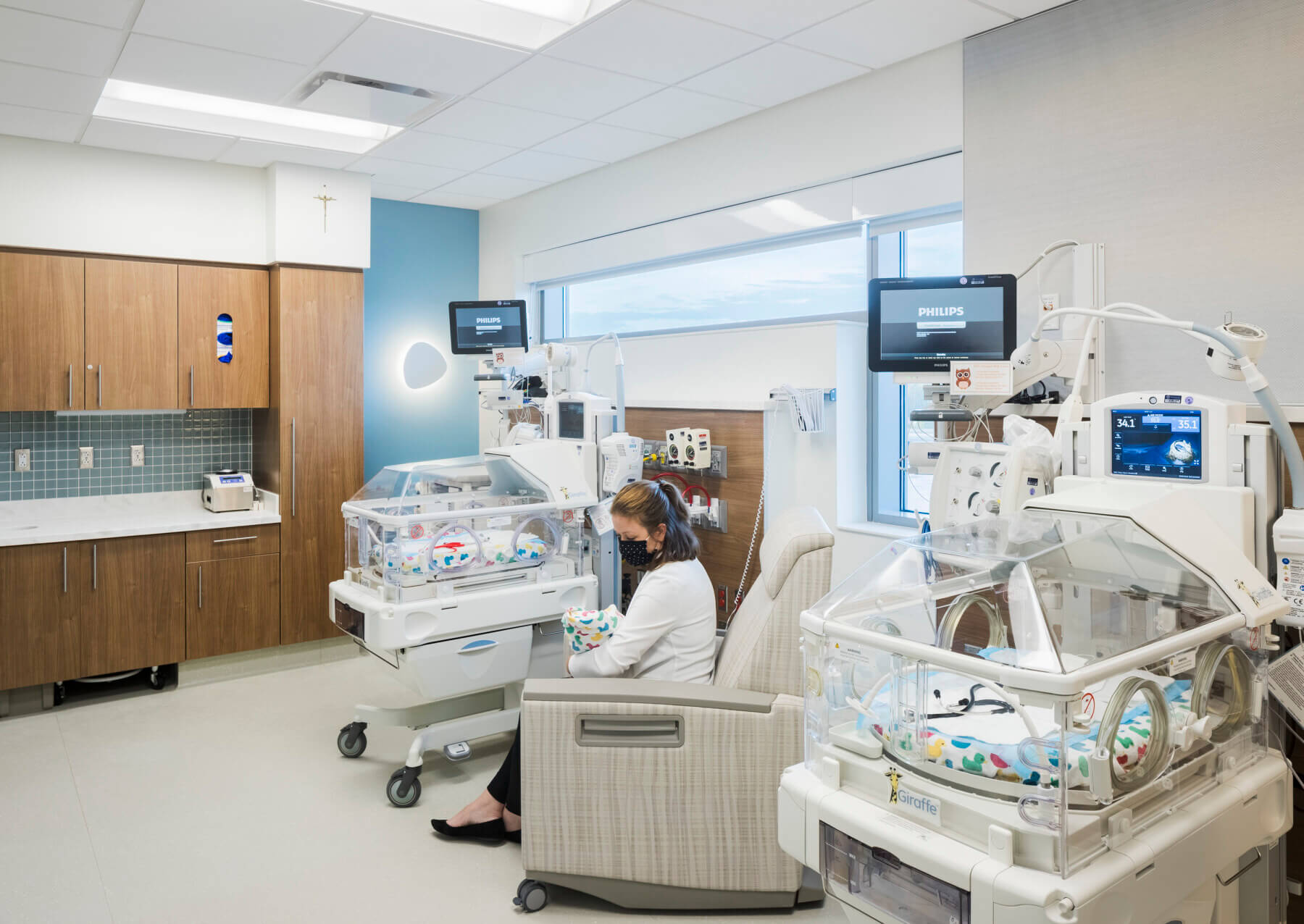
The third floor is home to the maternity center—a comfortable, spa-like space that includes dedicated operating rooms that reduce travel distance for c-sections, spacious private patient rooms with concealed medical equipment, a rooftop garden, and an around-the-clock Level III newborn intensive-care unit. The fourth, fifth, six and seventh floors house standardized patient rooms with adaptable headwalls that can flex with acuity level. The all-private rooms also feature large windows and spacious bathrooms, as well as in-room technology that provides patients with educational videos about their medical conditions, introduces them to their caregiver, allows them to order meals, connects to the internet and streams entertainment. Decentralized nurse stations and supplies on each floor enable caregivers to stay close to patients, and inter-department conference rooms located on the building’s perimeter eliminate redundancies.
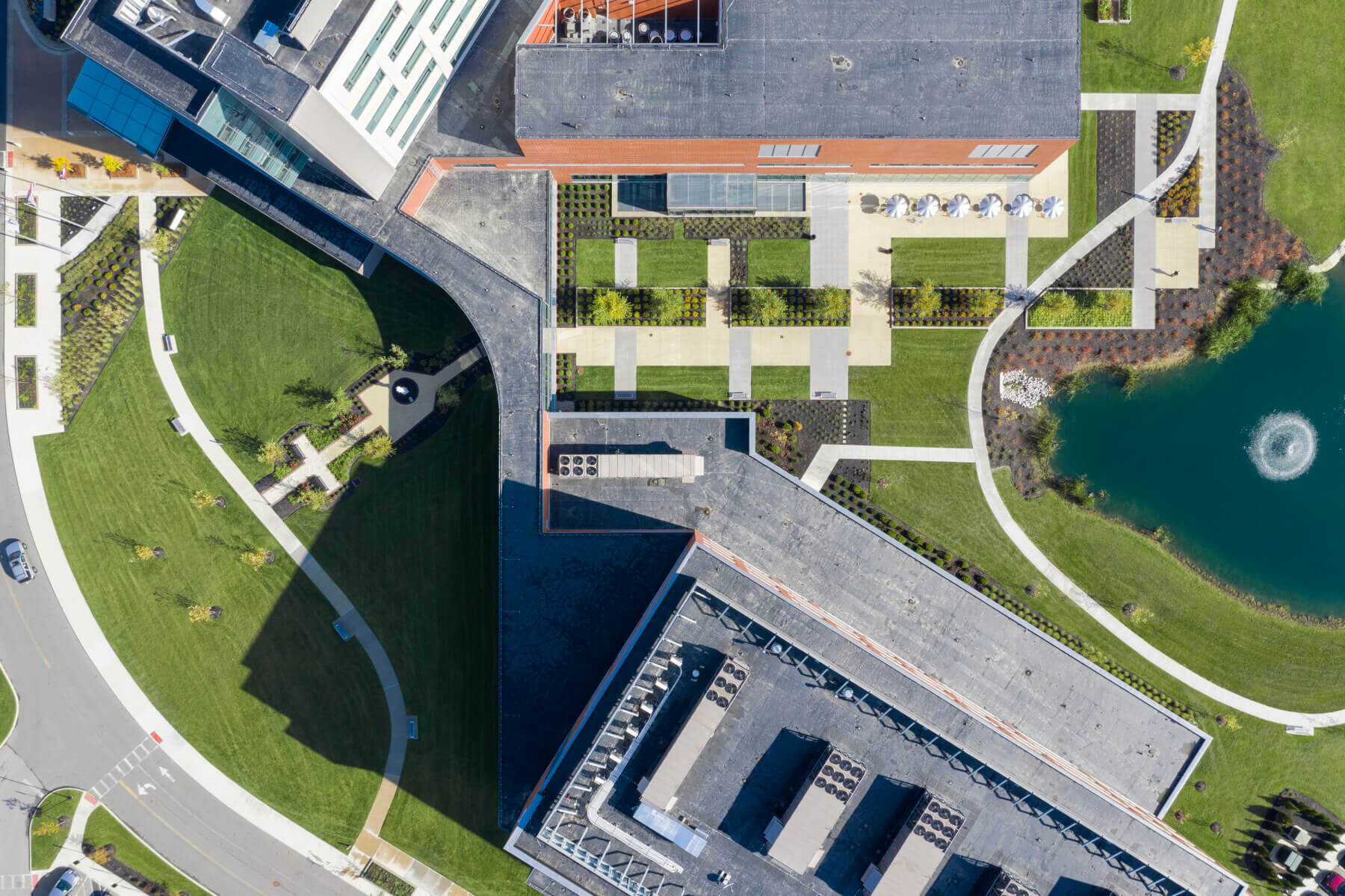
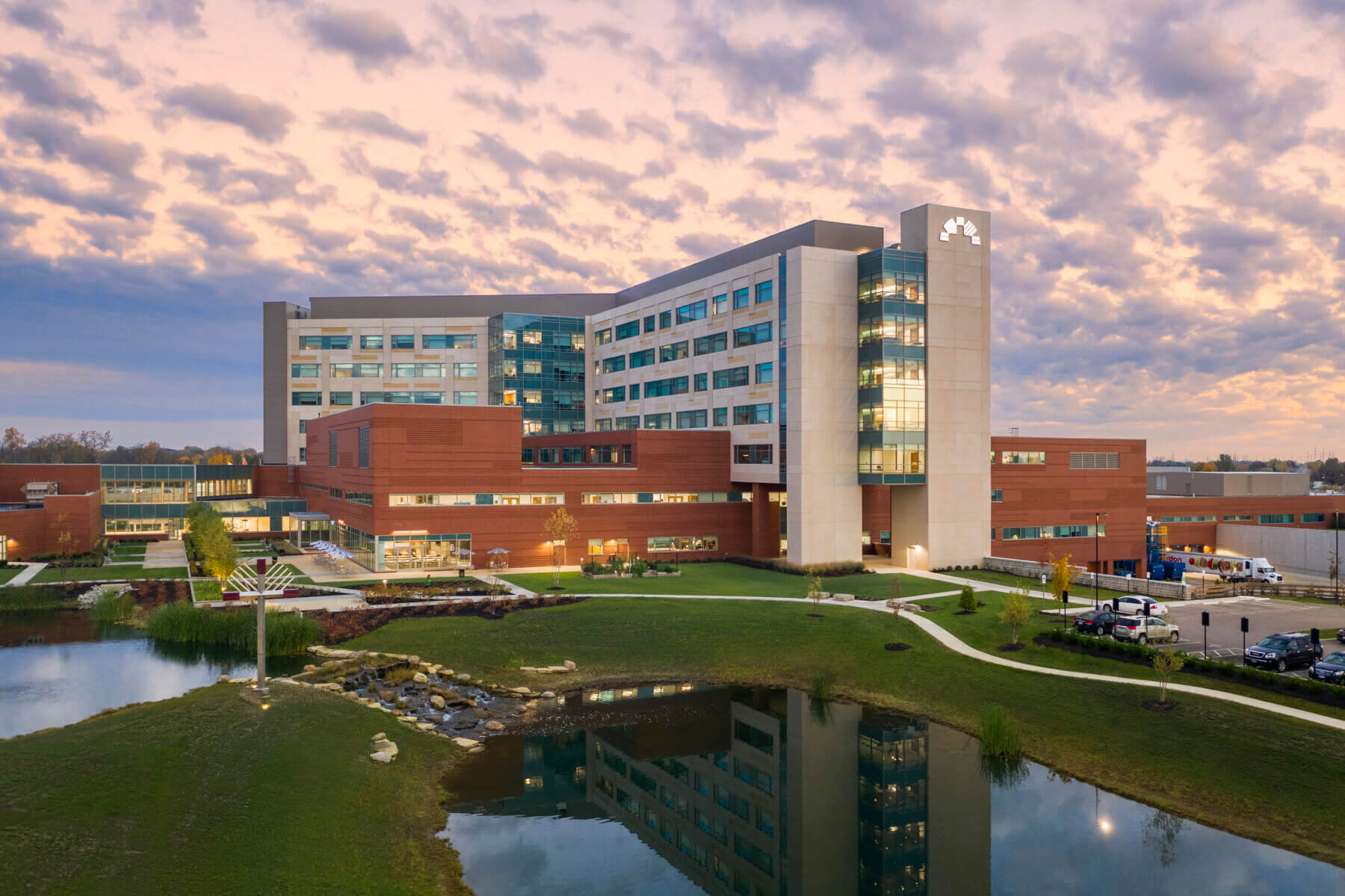
Outdoor walking trails and gathering spaces with views of the pond offer connection to nature and provide respite for patients, family members and staff. We relocated the iconic cross that hung on the former facility’s brick façade to the new campus’ outdoor area to pay homage to the health system’s history.
